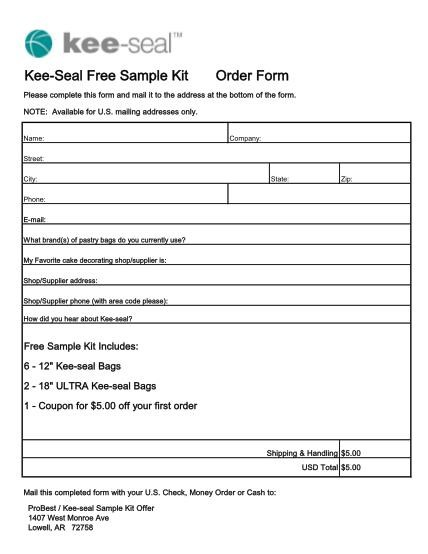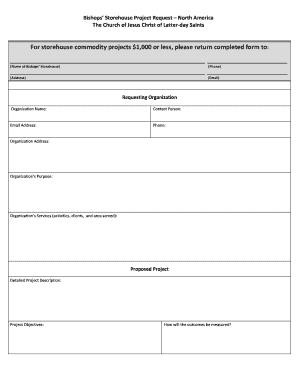Understanding the “Easy Way to Stop Smoking” Book
Allen Carr’s “Easy Way” is a popular self-help book using a unique method to quit smoking. It challenges ingrained beliefs about nicotine addiction, offering a different perspective and practical steps for lasting cessation.
Allen Carr’s Method and its Popularity
Allen Carr’s “Easy Way to Stop Smoking” distinguishes itself through its unconventional approach; Unlike methods focused on willpower and struggle, Carr’s technique reframes smoking addiction, addressing the underlying psychological dependence rather than solely the physical cravings. The book’s popularity stems from its relatable explanations of smoker psychology, dispelling common myths about nicotine’s addictive power. Carr’s method emphasizes understanding the reasons behind smoking, helping smokers re-evaluate their relationship with cigarettes and ultimately quit without the typical withdrawal struggles. This unique approach, combined with its widespread availability in various formats including PDF, has contributed to its lasting success as a leading self-help resource for smokers seeking freedom from addiction.
The Book’s Core Principles and Techniques
Central to Carr’s method is the deconstruction of the smoker’s mindset. The book challenges the deeply ingrained belief that quitting is a difficult and painful process. Instead, it presents a cognitive reframing technique, arguing that the perceived hardship is a self-imposed limitation based on misconceptions about nicotine addiction. Carr’s techniques involve a systematic dismantling of these misconceptions, replacing them with a realistic understanding of the smoker’s relationship with cigarettes. This involves addressing the psychological aspects of addiction, such as the fear of withdrawal and the belief that cigarettes provide pleasure or relief. The book guides readers through a series of exercises designed to challenge these ingrained beliefs and ultimately to help them break free from their dependence on nicotine without resorting to willpower or deprivation. The process emphasizes a rational understanding of addiction as a crucial step toward lasting freedom from smoking.
Preparing for Your Quitting Journey
Before you quit, set a realistic quit date and choose a method that suits your lifestyle. Gather support from friends, family, or support groups.
Setting Realistic Goals and Expectations
Avoid setting overly ambitious goals; aiming for complete abstinence immediately can be overwhelming and lead to setbacks. Instead, break down your quitting journey into smaller, manageable steps. For instance, you might start by reducing the number of cigarettes you smoke daily, gradually decreasing the amount until you reach zero. Remember that relapses are a common part of the process, and they don’t signify failure. View them as learning opportunities to identify triggers and adjust your strategies accordingly. Celebrate your achievements along the way, no matter how small they seem. Acknowledge your progress and reward yourself for milestones reached; this positive reinforcement will boost your motivation and improve your chances of long-term success. Focus on the positive changes you’re making, rather than dwelling on the challenges ahead. Remember to be patient with yourself and trust in your ability to overcome this addiction.
Creating a Personalized Quitting Plan
A successful quit plan is tailored to your individual circumstances and preferences. Consider your typical smoking patterns – when and where you smoke most frequently, and what triggers your cravings. Identify these triggers and develop strategies to avoid or manage them. This might involve changing your daily routine, finding alternative activities to occupy your time, or seeking support from friends, family, or support groups. Include specific actions to take when cravings hit; for example, drinking water, going for a walk, or practicing relaxation techniques. Set realistic daily or weekly goals, focusing on gradual reduction rather than immediate cessation. Enlist support; share your plan with loved ones and ask for their encouragement and understanding. Don’t hesitate to adjust your plan as needed; be flexible and adapt your strategies as you encounter new challenges or unexpected obstacles. Regularly review and update your plan to ensure it remains relevant and effective throughout your quitting journey.
Overcoming Challenges and Relapses
Expect challenges; nicotine withdrawal can cause irritability, anxiety, and cravings. Relapses are common; view them as learning opportunities, not failures. Adjust your plan, seek support, and try again.
Managing Withdrawal Symptoms
Nicotine withdrawal symptoms vary greatly among individuals, but common experiences include intense cravings, irritability, anxiety, difficulty concentrating, increased hunger, and sleep disturbances. The severity and duration of these symptoms depend on factors such as the length and intensity of smoking history, as well as individual physiological responses. While Allen Carr’s method emphasizes a mental approach to quitting, acknowledging and managing these physical symptoms is crucial for successful cessation. Strategies to mitigate withdrawal symptoms include engaging in regular physical activity to alleviate stress and improve mood, practicing relaxation techniques like deep breathing or meditation to calm nerves, and maintaining a healthy diet to regulate energy levels and reduce emotional eating. Staying hydrated is also important, as dehydration can exacerbate symptoms. Consider seeking support from friends, family, or support groups to help navigate the challenging period of withdrawal and prevent relapse. Remember that withdrawal symptoms are temporary and will eventually subside, paving the way for a smoke-free life. Consistent self-care and appropriate coping mechanisms can significantly improve the chances of overcoming these challenges and achieving long-term success in quitting smoking.
Coping with Stress and Cravings
Stress and cravings are significant hurdles in quitting smoking. Carr’s method addresses these by reframing the smoker’s relationship with cigarettes, aiming to eliminate the underlying psychological dependence. However, practical strategies are still vital. Identify your personal triggers for cravings – specific times, places, or emotions – and develop alternative responses. Engage in activities that distract from cravings, such as exercise, hobbies, or spending time with supportive individuals. Mindfulness techniques, including meditation or deep breathing, can help manage stress and cravings in the moment. Nicotine replacement therapies, though not directly part of Carr’s approach, can assist in reducing physical cravings while focusing on the mental aspects of quitting. Building a strong support network is crucial; friends, family, or support groups provide encouragement and accountability. Remember that cravings are temporary and intense feelings will subside. Replacing unhealthy coping mechanisms with positive activities builds long-term resilience against stress and prevents relapse. Developing healthy stress-management strategies beyond quitting smoking contributes to overall well-being and enhances the chances of maintaining a smoke-free lifestyle.
Utilizing Additional Resources
Supplementing Allen Carr’s book with online support groups and reputable mobile apps can significantly aid your quit journey, offering extra guidance and community support.
Online Support Groups and Communities
The internet offers a wealth of online resources to aid smokers in their quit attempts. Many websites and forums provide a supportive community where individuals can share their experiences, challenges, and successes. These platforms offer a sense of camaraderie and understanding, crucial for navigating the emotional and psychological aspects of quitting. Participants can connect with others facing similar struggles, receive encouragement, and share tips for managing cravings and setbacks. The anonymity offered by online communities can be particularly beneficial for those who feel hesitant to seek support from their immediate social circles. Some online groups are specifically designed to support those using Allen Carr’s Easy Way method, providing a focused environment for discussion and shared experiences with this specific approach to quitting. Remember to approach online forums and communities with discernment, selecting reputable and moderated platforms to avoid misinformation or potentially harmful content.
Mobile Apps and Digital Tools
Numerous mobile applications and digital tools are available to support individuals in their journey to quit smoking. These apps often incorporate features such as progress trackers, personalized goal setting, and educational resources. Many offer interactive tools to help manage cravings, providing distraction techniques or coping mechanisms. Some apps integrate with wearable technology to monitor activity levels, potentially aiding in stress reduction and healthier lifestyle choices. Gamification features, such as reward systems or challenges, can enhance motivation and engagement. Users can find apps that specifically align with their chosen method of quitting, including those that support the principles of Allen Carr’s Easy Way. Remember to research and select reputable apps from trusted developers, paying attention to user reviews and security features. While technology can be a valuable asset in the quitting process, it’s important to use it as a supplement to a comprehensive plan, rather than a sole reliance for success.
Maintaining Long-Term Success
Sustaining a smoke-free life requires ongoing commitment. Develop healthy coping mechanisms for stress and cravings, and seek professional support if needed. Celebrate milestones!
Developing Healthy Coping Mechanisms
Successfully quitting smoking and maintaining a smoke-free lifestyle often hinges on developing and employing effective coping mechanisms. These strategies help manage the stress, anxiety, and cravings that can trigger relapse. Identify your personal triggers—situations, emotions, or people associated with your smoking habit—and proactively plan how to navigate them. Consider alternative activities to replace smoking, such as engaging in regular physical exercise, practicing mindfulness or meditation, pursuing hobbies, spending time in nature, or connecting with supportive friends and family. These healthy distractions can significantly reduce the urge to smoke, especially during moments of stress or boredom. Learning relaxation techniques, such as deep breathing exercises or progressive muscle relaxation, can also be invaluable in managing withdrawal symptoms and preventing relapse. Remember, consistency is key; regularly practicing these coping strategies strengthens their effectiveness over time.
Seeking Professional Support When Needed
While self-help resources like Allen Carr’s “Easy Way” offer valuable guidance, acknowledging the need for professional support is crucial for successful smoking cessation. Many smokers benefit from the personalized guidance and accountability provided by healthcare professionals. Doctors and therapists can offer tailored advice, prescribe medication to manage withdrawal symptoms, and provide ongoing support during challenging moments. Consider seeking professional help if you experience intense withdrawal symptoms, struggle to manage cravings independently, or repeatedly relapse despite self-help efforts. Group therapy or individual counseling can provide a safe space to discuss your experiences, learn coping strategies from others, and receive encouragement from trained professionals. Remember, seeking professional help is not a sign of weakness; rather, it demonstrates a commitment to overcoming nicotine addiction and achieving lasting freedom from smoking. Don’t hesitate to utilize the resources available to enhance your chances of success.


